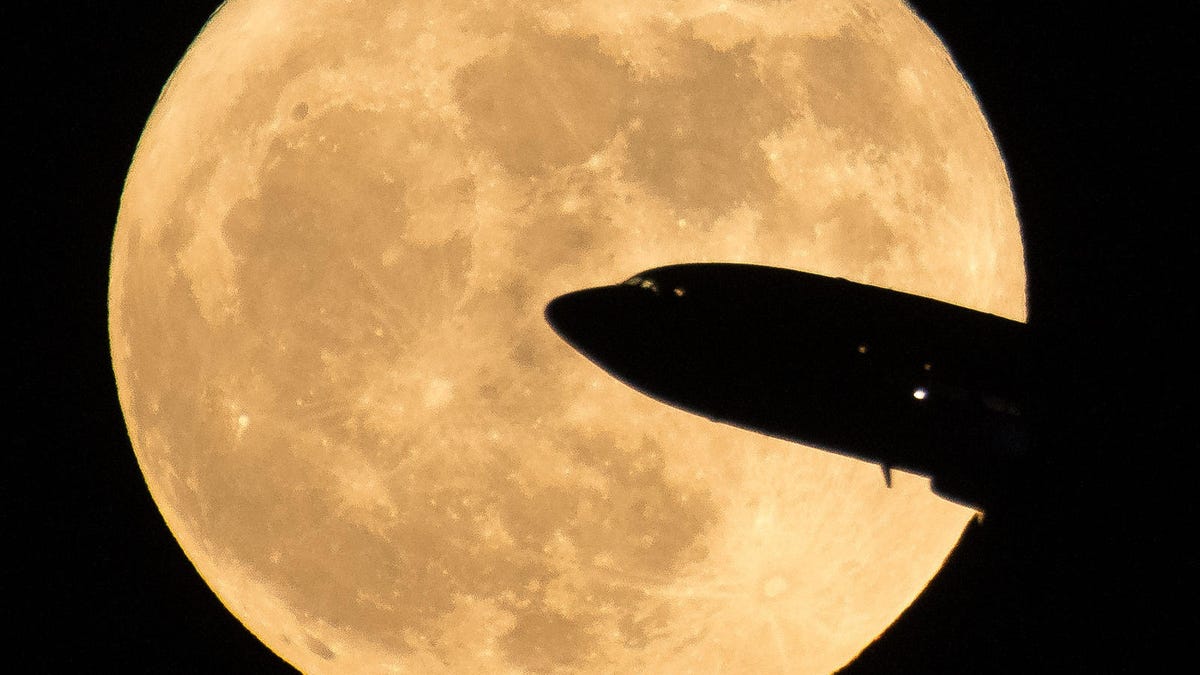There's a Wolf Moon tonight: How to howl at the first full moon of 2021
The best and brightest show of the year so far makes its debut at sunset Thursday.

An aircraft taking off from Ronald Reagan National Airport is seen passing in front of the Moon as it rises.
A fantastic evening show will be visible from just about anywhere on Earth with clear skies Thursday, though the backdrops will obviously vary. But no matter where you are, you should be able to watch the sunset and then turn around to watch the first full moon of 2021, nicknamed the Wolf Moon in North America, around the same time.
The moon will appear to be full over the next few nights as well, but only on Thursday evening do you get to observe the spectacle of that huge full moon rising over the horizon just as the sun sets.
It's not really clear why this mid-winter moon is named for a wild canid, although some suspect it can be traced to traditional Native American and European methods of keeping track of time's passage. As NASA points out, this particular full moon is also observed elsewhere as the Candles Moon, the Thaipusam Festival Moon, the Ananda Pagoda Festival Moon and the Full Moon of Tu B'Shevat, among others.
Astronomically speaking, the moment the moon is at its fullest -- that is, directly opposite the sun -- will come at 11:16 a.m. PT Thursday. But obviously our satellite will not be observable from many locations at that time. Fortunately, anyone can just plan to step outside at sunset to catch the show.
Once twilight fades into night illuminated by that howl-worthy moon, Mars should also be visible high in the sky to the south-southwest. Orient yourself to face that direction and then look almost directly overhead and it should be the brightest object you see.
But no celestial sight is easier to take in than a glorious full moon. It's also one of the better ones for even amateurs to photograph. If you get any great shots, please share with me @EricCMack.
Follow CNET's 2021 Space Calendar to stay up to date with all the latest space news this year. You can even add it to your own Google Calendar.

